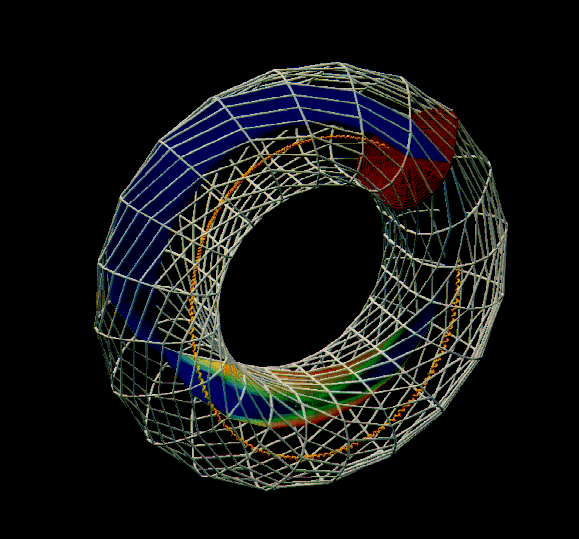
Spring/Summer 1999
Volume 6, Issue 2
Spring/Summer 1998
Volume
3, Issue 1
January 1995
Volume
2, Issue 4
October 1994
Volume
2, Issue 1
January 1994
THE NUMERICAL TOKAMAK PROJECT: SIMULATION OF TURBULENT TRANSPORT
B.I. Cohen, Lawrence Livermore National Laboratory; D.C. Barnes, Los Alamos National Laboratory; J.M. Dawson, University of California at Los Angeles; G.W. Hammett, W.W. Lee, Princeton University; G.D. Kerbel, National Energy Research Supercomputer Center; J.-N. Leboeuf, Oak Ridge National Laboratory; P.C. Liewer, Jet Propulsion Laboratory/California Institute of Technology; T. Tajima, University of Texas, Austin; R.E. Waltz, General Atomics.
Theory and experiment have helped present-day "tokamak" fusion reactors reach the threshold of producing feasible fusion power. However, more development remains before this power source can be commercially successful. Future experiments will be large, cost billions of dollars each, and allow little room for uncertainty. High-performance computing is playing a crucial role in designing these machines, helping to analyze the equilibrium, stability, and transport for these fusion experiments. The Numerical Tokamak Project is providing more complete, reliable, and accurate numerical information in the study of Tokomak reactors, saving billions of dollars in development costs.
Three-dimensional fluid and kinetic models are being used to simulate the turbulent confinement of energy and plasma in the core of tokamaks. These simulations can accurately model large tokamak experiments because they use realistic plasma parameters and incorporate important geometrical effects. Algorithm improvements and the use of high- performance computing methodology has led to dramatic improvements in simulation capability.
The group has already identified and addressed several important issues in parallel computing, including efficient algorithms for locating and following particles in complex geometries, load leveling among many processors, and different programming paradigms specific to the architectures of massively parallel computers. Both particle and fluid methods used in these calculations require the most advanced data storage and visualization tools to deal with the very large number of degrees of freedom represented in such calculations.
Source: "An Overview of the Numerical Tokomak Project"

A three-dimensional computer simulation used to study particle trajectories and electrostatic potential in Tokomak fusion reactors (image courtesy of J. Brackbill, J. Reynders, C. Hansen, and M. Krogh, Los Alamos National Laboratory).
Table of Contents